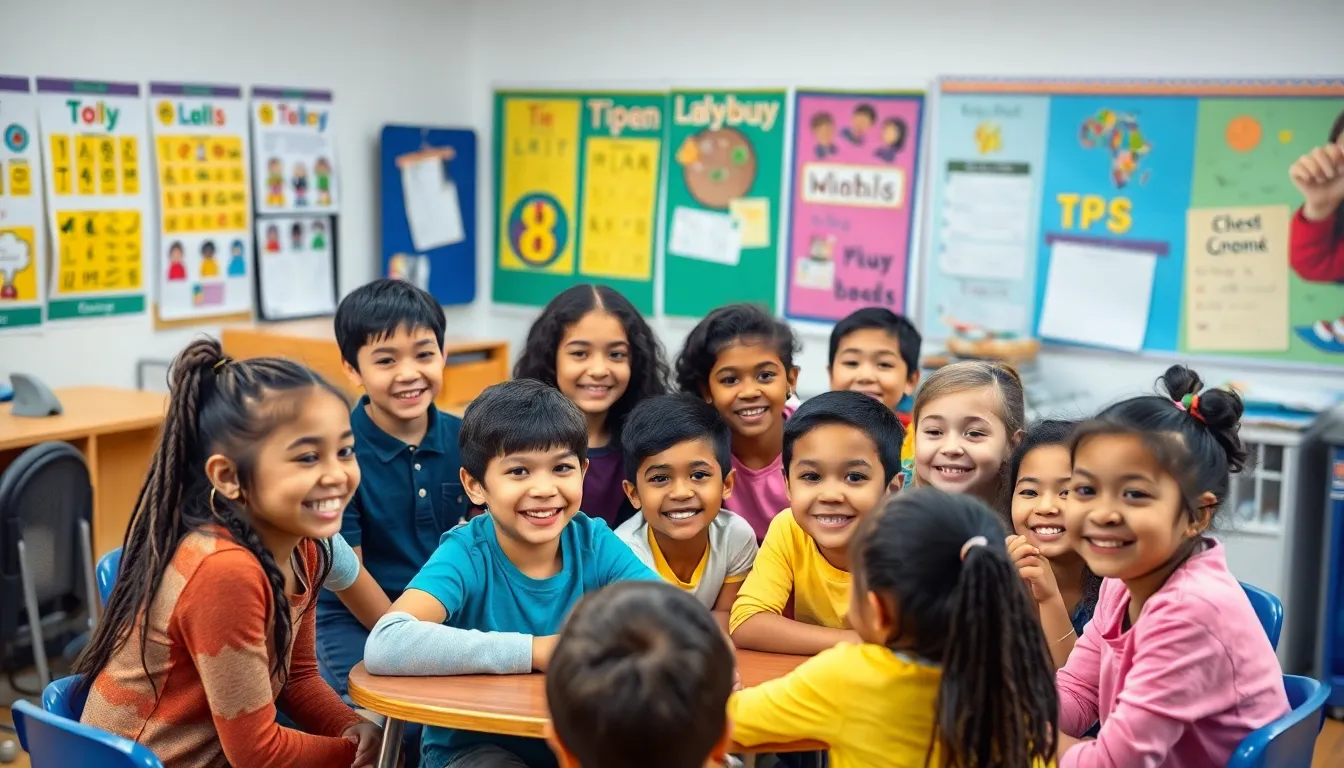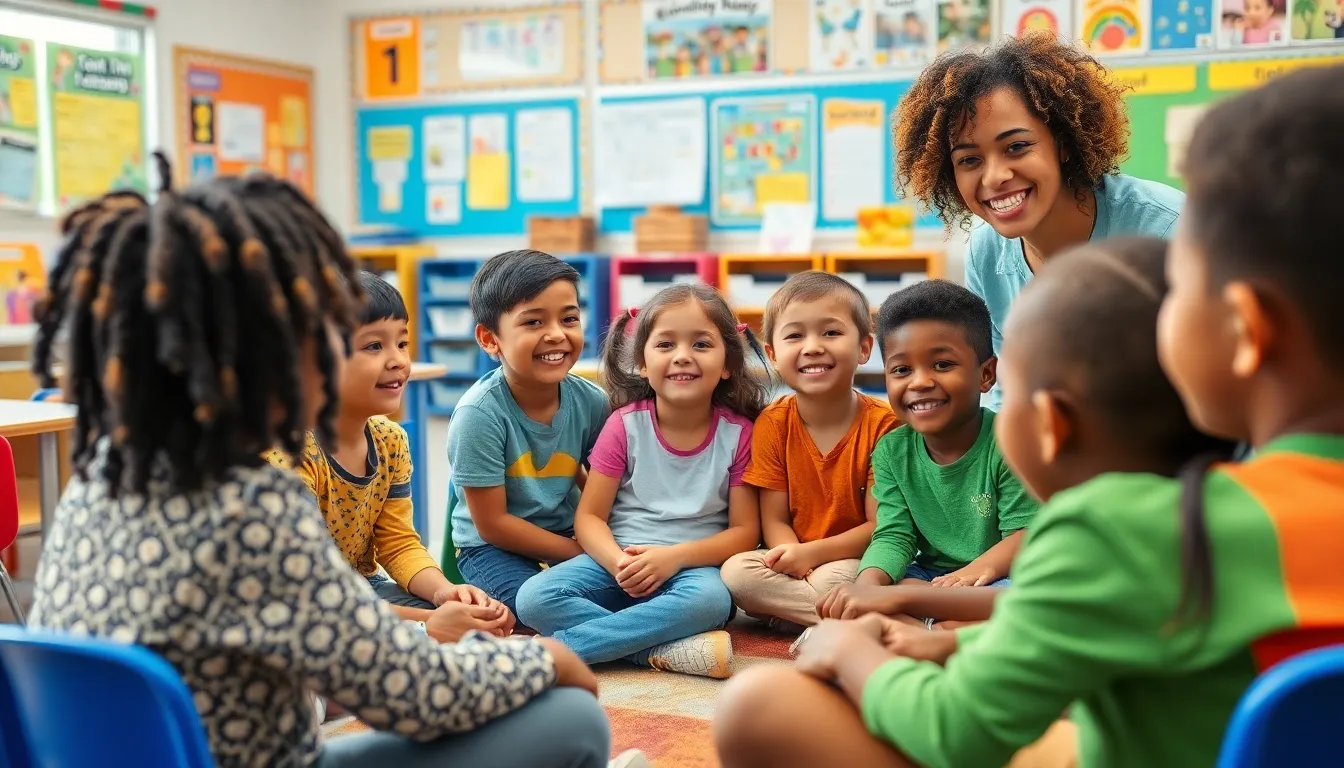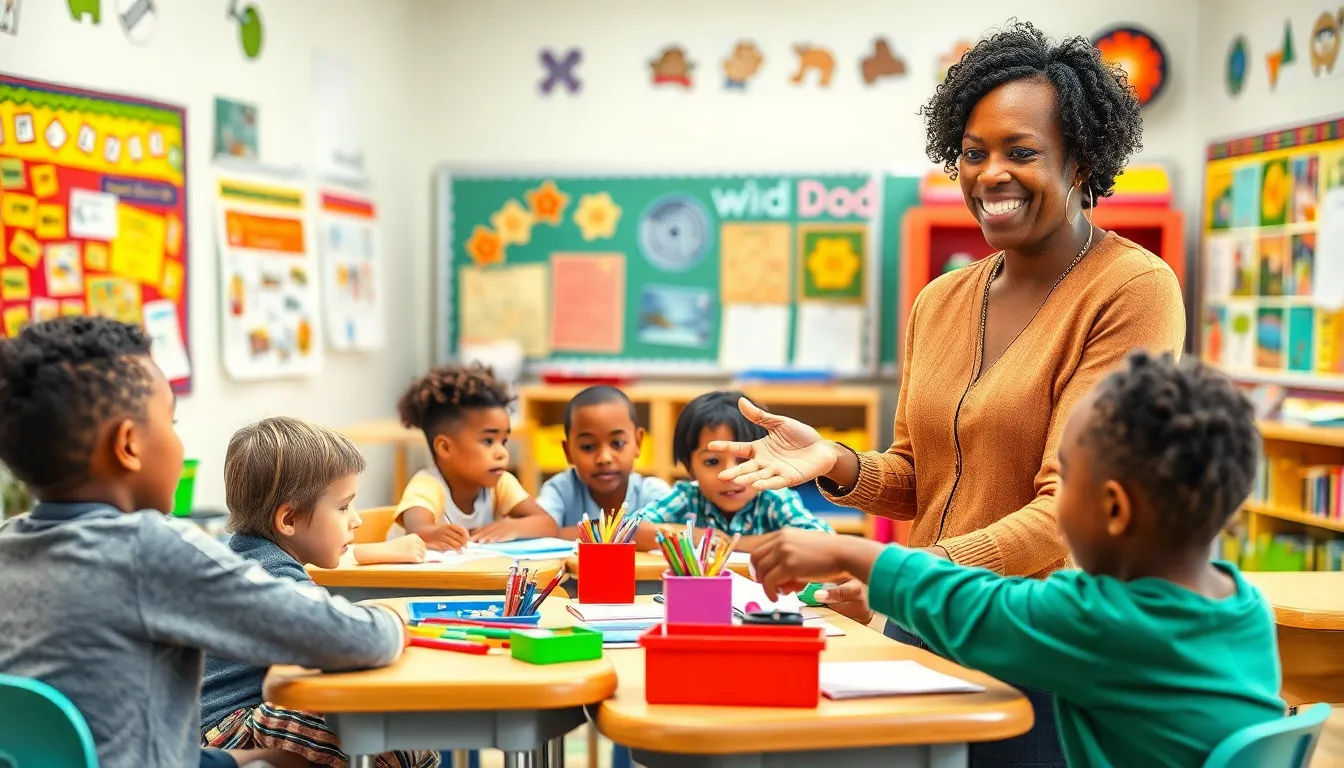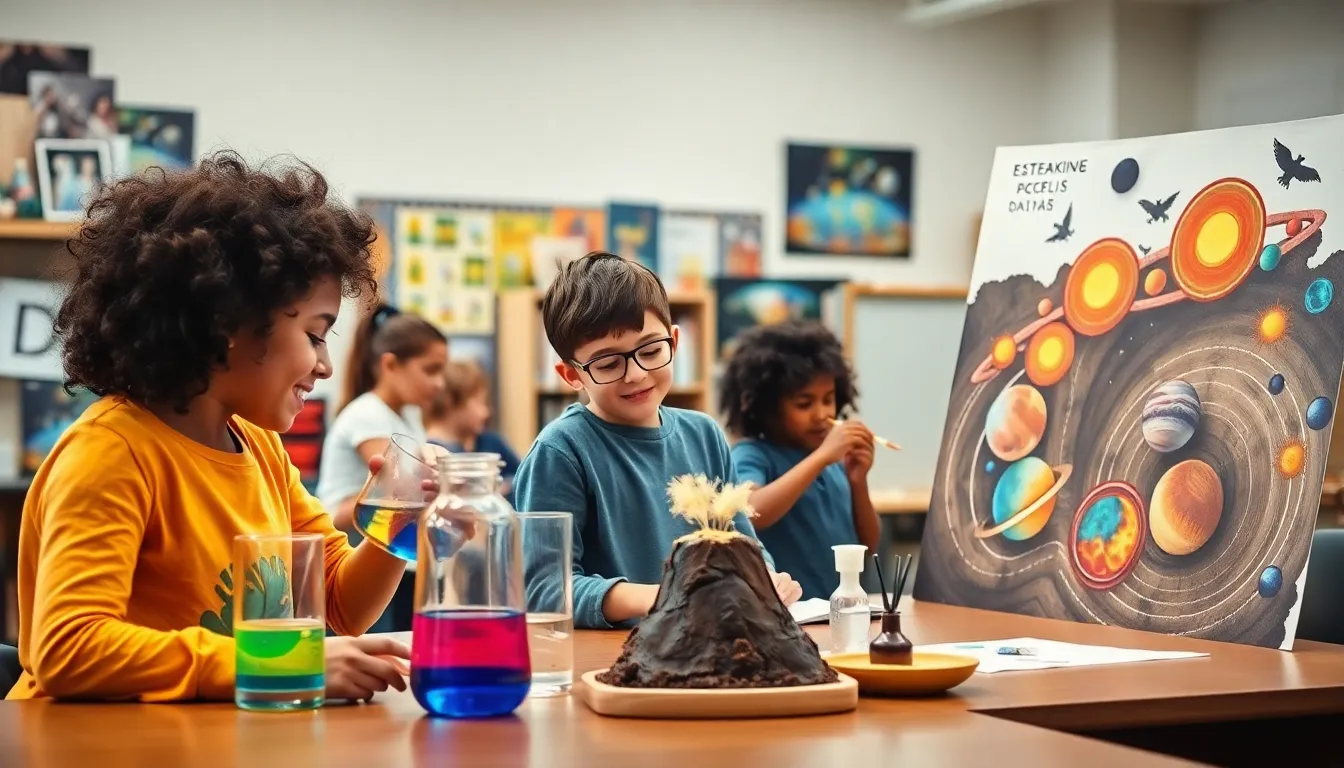In the bustling world of education, behavioral interventions might just be the unsung heroes, swooping in to save the day. Picture this: a classroom filled with curious minds, but chaos reigns as students test the limits of patience. Enter behavioral interventions, the superhero tactics that transform rowdy classrooms into hubs of learning.
Table of Contents
ToggleOverview of Behavioral Interventions in Schools
Behavioral interventions serve as critical strategies aimed at improving student behavior and enhancing academic outcomes. Many schools implement these interventions to address specific behavioral concerns while fostering a positive classroom environment. Educators often utilize various techniques, including positive reinforcement and structured support, to encourage desirable behaviors.
Targeted interventions focus on students exhibiting challenging behaviors. Individual plans may involve collaboration with parents and specialists, ensuring that each child’s unique needs are met. Group interventions can also target common behavior patterns, allowing teachers to address issues that affect the entire class.
Data indicates that schools employing behavioral interventions experience a significant reduction in disciplinary actions. For instance, a study by the Institute of Education Sciences found that implementing Positive Behavioral Interventions and Supports (PBIS) resulted in a 20% decrease in suspensions across participating schools. This evidence underscores the effectiveness of systematic approaches in managing student behavior.
Training and professional development for teachers are essential for the successful implementation of these interventions. Engaging educators in ongoing training helps build their confidence in applying behavioral strategies effectively. Moreover, collaboration among staff contributes to the consistency and reinforcement of positive behaviors within the school culture.
Regular assessment of behavioral interventions is crucial in determining their effectiveness. Schools often use monitoring tools to track student progress and adjust strategies as needed. Continuous evaluation ensures that interventions remain relevant and impactful, ultimately fostering a conducive learning atmosphere for all students.
Types of Behavioral Interventions

Various behavioral interventions exist to support student success and improve classroom dynamics. These strategies address specific behaviors and cultivate a positive environment.
Positive Reinforcement Strategies
Positive reinforcement strategies reward desirable behaviors to encourage their repetition. Educators might use praise, tokens, or privileges as incentives for compliance. Studies indicate that consistent application of these strategies can lead to a 25% increase in on-task behavior. Schools utilizing positive reinforcement often report enhanced student motivation and morale. These approaches allow teachers to create a supportive atmosphere where students feel valued and recognized for their achievements.
Social Skills Training
Social skills training focuses on improving students’ interpersonal interactions. This intervention teaches essential skills like communication, cooperation, and conflict resolution. Structured activities and role-playing help students practice and internalize these skills. Effective programs lead to a reduction in behavioral issues, with reports showing a 30% decrease in conflicts among classmates. Integrating social skills training into the curriculum creates a foundation for positive peer relationships, fostering a more harmonious learning environment.
Cognitive Behavioral Approaches
Cognitive behavioral approaches aim to shift negative thought patterns influencing behavior. These methods encourage students to recognize and modify their thoughts to improve emotional responses. By using techniques like journaling or cognitive restructuring, students learn to manage anxiety and frustration. Research highlights that schools implementing these approaches have observed a 40% reduction in disruptive behaviors. This type of intervention empowers students to take charge of their emotions, ultimately enhancing their academic performance and overall well-being.
Implementation of Behavioral Interventions
Effective implementation of behavioral interventions involves multiple facets, including training educators and engaging parents and the community.
Training for Educators
Effective training for educators enhances the application of behavioral interventions. Schools provide ongoing professional development, bolstering teachers’ confidence in using strategies. Educators learn about various techniques such as positive reinforcement and cognitive behavioral approaches. They also receive guidance on monitoring progress, ensuring interventions remain effective. This training not only equips teachers with necessary skills but also reinforces collaboration among staff, fostering a supportive school culture. Data shows increased engagement and improved student behavior occurs in schools where educators receive regular training.
Involvement of Parents and Community
Involvement of parents and the community plays a crucial role in successful behavioral interventions. When parents engage in the process, students often exhibit enhanced behavioral changes at home and in school. Schools communicate regularly with parents about intervention strategies and student progress, creating a unified approach. Community resources, such as local organizations, can contribute additional support for students and families, amplifying positive behavioral outcomes. Collaboration between schools, parents, and community members results in a more comprehensive support system, directly impacting student success and wellbeing.
Effectiveness of Behavioral Interventions
Behavioral interventions demonstrate significant effectiveness in educational settings, positively influencing student behavior and academic performance.
Case Studies and Success Stories
Numerous case studies highlight the success of behavioral interventions. A notable example involves a school that implemented Positive Behavioral Interventions and Supports (PBIS), resulting in a 20% decrease in suspensions. In another instance, a district’s focus on social skills training led to a 30% reduction in conflicts. These successes show that tailored interventions produce measurable results. Significant improvements in on-task behaviors occurred with positive reinforcement strategies, evidenced by a 25% increase in student motivation. Such outcomes emphasize the powerful impact of structured behavioral approaches on the learning environment.
Challenges and Limitations
Despite their effectiveness, challenges and limitations persist in implementing behavioral interventions. Schools often face resource constraints, limiting the extent of professional development training. Inadequate training reduces teacher confidence, hindering successful application of strategies. Additionally, not all parents consistently engage in intervention processes, which can diminish overall effectiveness. Monitoring tools, while essential, may not always track nuances in student progress effectively. Schools must navigate these challenges while striving to create supportive environments conducive to learning. Ongoing refinement of interventions is crucial to overcoming these limitations and maximizing positive outcomes.
Future Directions in Behavioral Interventions
Innovative approaches focus on enhancing the effectiveness of behavioral interventions in schools. Research indicates that integrating technology into these interventions can significantly improve engagement. Mobile apps and online platforms offer real-time feedback, allowing students to track their progress and receive immediate reinforcement.
Collaboration among educators, parents, and specialists emerges as a vital trend. Developing partnerships strengthens support systems and ensures tailored strategies meet individual student needs. Since regular communication fosters trust, schools enhancing this engagement report higher effectiveness rates in interventions.
Data-driven decision-making shapes future practices, prioritizing evidence-based interventions. Utilizing behavior analytics helps in identifying patterns and adjusting strategies responsively. Studies indicate that schools leveraging these analytics experienced a 30% improvement in student outcomes.
Promoting social-emotional learning (SEL) presents another promising avenue. Integrating SEL into the curriculum cultivates resilience and empathy, equipping students with essential life skills. Programs that emphasize SEL have shown a 35% reduction in behavioral issues, showcasing their impact on classroom dynamics.
Expanding training programs for educators also plays a crucial role in future directions. Comprehensive training not only builds teachers’ confidence but enhances their ability to implement interventions effectively. Research supports that schools with ongoing professional development saw a 40% increase in positive student behavior.
Creative interventions that focus on the whole child further enhance behavioral management strategies. Engaging students in problem-solving exercises fosters ownership of their behavior. Schools implementing holistic approaches experienced a 25% improvement in overall classroom climate.
As behavioral interventions evolve, continuous assessment and quality improvement remain essential. Regular reviews ensure strategies align with current student needs, promoting sustained success. Implementing these future directions effectively addresses challenges, maximizing positive behavioral outcomes in educational settings.
Behavioral interventions play a pivotal role in shaping positive educational environments. By addressing specific behavioral challenges and fostering collaboration among educators and parents, these strategies create a supportive atmosphere conducive to learning. The evidence clearly shows that schools implementing these interventions witness significant improvements in student behavior and academic performance.
As educational institutions continue to refine their approaches, the integration of innovative techniques and ongoing professional development will be essential. Emphasizing social-emotional learning and leveraging data-driven insights will further enhance the effectiveness of these interventions. Ultimately, prioritizing behavioral strategies is crucial for nurturing well-rounded students and ensuring their success both in school and beyond.






